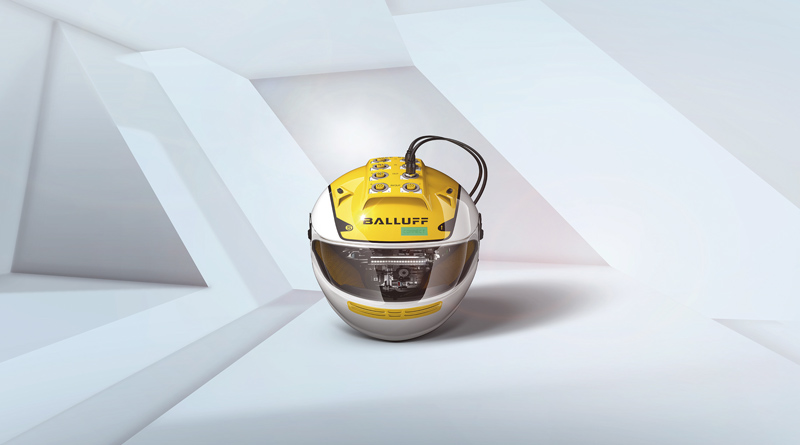IO-Link Is the Key to Safety
The increasingly widespread IO-Link standard, at the heart of the Internet of Things and therefore of the industrial evolution according to Industry 4.0, may allow users to combine safety solutions and automation in a single communication infrastructure. This includes devices on the machine and easily reaches PLC, SCADA, MES and ERP levels. Fabio Rosso, Head of Service Center at Balluff Automation, gave an overview of all this at Forum Meccatronica 2017.
di Cesare Pizzorno
The changes that Industry 4.0 is generating in manufacturing result also in the requirements of machine builders. Unlike what happened until a few years ago, OEMs expect that safety solutions are provided by the same companies that provide automation solutions. This means that process automation is increasingly integrated into a single infrastructure that also includes safety.
Six million IO-Link devices currently installed worldwide
“According to Balluff, the implementation of safety solutions is closely related to the consolidation of the IO-Link”, explains Fabio Rosso, Head of Service Center at Balluff Automation. “If we consider the traditional diagram of machine infrastructure, the IO-Link safety hubs can be found at the second level, immediately above sensors and actuators, and they are connected to the upper level, the one where the Fieldbus master is located. The latter acts as an interface with the controller. The advantages are the following: communication is managed on a single architecture; the system remains open as for safety sensors and actuators; the safety hub is directly connected to the IO-Link master and, finally, the parameterization of safety chains can be performed directly via PLC”. The IO-Link is an Industry 4.0-compliant international standard that meets the requirements of wiring simplification. So far, the consortium has gathered together over 130 companies, with more than 3,500 devices equipped with IO-Link interface available on the market. Since 2010, the year in which the standard started its successful path, the number of devices sold has grown exponentially year by year, for a total of about 6 million IO-Link devices currently installed worldwide.
A single communication architecture including also the safety part
In the past, safety architecture was parted from automation architecture. Now, as mentioned above, the trend is to provide a single architecture including also the safety part. From a technical point of view, how is it possible to exploit the advantages of the IO-Link in “safe” areas? “By relying on the so-called tunneling, a system based on the Black Channel principle that allows a ‘foreign’ protocol to be transported through an infrastructure that does not natively support this protocol”, continues Fabio Rosso. “In other words, it is about re-packaging the data in a different way: in our case, the Profisafe – a safe and well-established protocol – within the IO-Link. Using the Profisafe protocol and tunneling principle on the IO-Link, a communication channel can be created starting from a ‘failsafe’ PLC up to the I/O hub, to which the traditional safety devices can be connected. All this is managed directly on the machine, making the wiring part as well as the machine architecture easier”.
Safety devices to be connected to the IO-Link hub
Balluff’s IO-Link safety hub is a device with IP67 protection standard, which is very easy to install and equipped with eight M12 ports. The first four ports are used for the traditional safety inputs, therefore for the connection of sensors on the machine. There are two other output ports, while the last two are mixed I/Os. Several safety devices can be connected to the IO-Link hub directly on the machine: emergency stop buttons, interlocks, safety barriers with different sizes, as well as RFiD-coded sensors, reed Safety sensors, or even Safety inductive sensors. All these devices make it possible to manage applications such as barriers, delimitation of work areas and so on, for manifold sectors: assembly, handling or even machine tools. In fact, almost all the machines are featured by emergency devices such as buttons or barriers.
The IO-Link topology makes it possible to reduce wiring, then the efforts in terms of costs and time.
The IO-Link standard at the base of the IoT
According to Balluff’s vision, the IO-Link standard is at the base of the Internet of Things, therefore of the industrial evolution according to Industry 4.0, which basically aims to increase competitiveness by triggering flexibility and efficiency.
“All this is based on some pillars – adds Fabio Rosso – as, just to name a few, predictive maintenance, remote parameters, quality control, condition monitoring, traceability, format changeover, safety, network management or data analytics. These elements rely on some basic conditions, such the increase of production data up to the lowest communication level; the presence of intelligent devices capable of generating the necessary information, and a seamless communication, from the sensor/actuator up to the highest level of the automation architecture. The IO-Link interface plays a key role in such a scenario”.
Bringing the OT and the IT world closer
In particular, the IO-Link master – the device which can be found immediately below the PLC in the diagram of machine infrastructure – also acts as a gateway between Operational Technology (OT) and Information Technology (IT). It is also capable to implement communication protocols that were not normally known or widespread in the OT.
“All this is aimed at bringing the OT and the IT world closer, indeed one of the clearest effects of Industry 4.0”, summarizes Balluff Automation’s technical manager, who describes the scenario in details. “An IO-Link gateway/master for managing facilities on the machine, such as sensors, relies on a cyclic channel for managing these signals during the process. At the same time, it also processes acyclic data, by means of TCP/IP or UDP protocols, for communicating with a server in order to manage Web interfaces, alarms, messaging services, SMS, emails, statistics for predictive maintenance or energy consumption monitoring and so on”.

